Colombia has been ranked as one of the top foreign retirement locations by foreign retirement publications. But there are downsides to living in Colombia.
Colombia is the second most bio-diverse country in the world, after Brazil. Colombia has a diversity ranging from snow-capped mountains to beaches, thick jungles to vast plains, small pueblos to bustling cities. Also, Colombia is the only South American country bordered by two oceans.
I have traveled throughout Colombia over the past 10+ years and many of the landscapes in Colombia are breathtaking. I even wrote about the top 20 tourist attractions in Colombia based on my experiences.
In addition, Colombia has a relatively low cost of living for many foreigners. And there are many websites with articles touting Colombia as a great place to live.
To me, there are a number of benefits to living in Colombia. And I previously wrote about 27 reasons why I ended up choosing Medellín in Colombia as a great place to live.
However, many publications I have seen tend to only discuss these positives and advantages about living in Colombia. And the downsides are glossed over or may not be mentioned. So, Colombia tends to be portrayed by some publications through rose-colored glasses.
On this website, there is no sugar-coating or looking at things only through rose-colored glasses. We cover both the benefits and the downsides or the pros and cons about living in Colombia and traveling in Colombia.
I have lived in Medellín for over eight years and the following list of downsides is based on my experiences living in Colombia and traveling throughout Colombia. I’m an expat originally from the U.S., so this is an expat’s perspective.

Bogotá has several downsides
Downsides of Living in the Cities in Colombia
Each city in Colombia is different with different benefits and also different downsides – the pros and cons are different for each city. We previously looked at the downsides to living in Medellín, downsides to living in Bogotá, downsides to living in Cali and downsides to living in Cartagena.
Each of our articles about the downsides of living in cities in Colombia also include some downsides that really apply to any city in Colombia. Also, we have looked at the downsides to living in El Poblado, which is the most expensive neighborhood in Medellín.
Downsides to Living in Colombia
Several readers asked what the overall downsides to living in Colombia are – the downsides that apply to any city in Colombia. So, we now look at Colombia downsides – the downsides to living in Colombia.
The following list of downsides to living in Colombia is in no particular order. In addition, not all of these downsides apply to everyone. And some of these downsides can be overcome or avoided.

Colombia income taxes and IVA tax
1. Need to File Taxes Twice and High IVA Tax
If you are an expat from the U.S. living in Colombia, you likely will have to file taxes in both the U.S. and Colombia.
You are considered a tax resident in Colombia if you stay in the country for more than 183 total days during a year, whether this time is continuous or not. In addition, Colombia taxes the worldwide income of tax residents.
Just because you have to file taxes in Colombia doesn’t necessarily mean you have to pay income taxes. Colombia has several deductions plus you can subtract some income taxes paid in another country from income taxes due in Colombia. We previously looked at filing income taxes in Colombia.
Colombia also has a 19 percent IVA tax (a value added tax – VAT) on many products, which makes buying many things more expensive. The IVA tax used to be 16 percent but was increased to 19 percent in February 2017. But some grocery items such as milk, eggs and fruits and several other items are exempt from the IVA tax in Colombia.
2. Spanish is Required
I have met some foreigners that have been living in Colombia for several years that don’t speak much Spanish. But most Colombians generally don’t speak much English. So, to be independent when living in Colombia you will need to speak some Spanish.
It is difficult to get by living in Colombia without speaking some Spanish. Only a few of the locals speak English. Most of the people that you will interact with on a typical day, such as store clerks, taxi drivers and waiters will speak little to no English. In addition, Education First ranks the English proficiency in Colombia as low at 48.90 on a 100-point scale.
I took 10 Spanish classes at Universidad EAFIT, so I speak Spanish at the intermediate level. And I am continuing to study to improve my vocabulary and pronunciation.
Nothing has helped me enjoy my time in Colombia more than the ability to effectively communication. And I was able to receive two Colombian student visas that permitted me to be in Medellín full-time.
Also, the English-speaking expat community in cities in Colombia is relatively small. In Bogotá and Cartagena, you are likely to find more English speakers than you can in other cities in Colombia. But even in Bogotá and Cartagena most Colombian don’t speak much English.
3. Corruption is Common in Colombia
Transparency International’s corruption rating has Colombia ranked as 99 out of 180 countries in terms of corruption perception.
If you want to get some things done in Colombia it can require a bribe. I have talked to several expats that have relied on local lawyers to take care of bribes so the expat can have “deniability”.
I know from experience the court system is corrupt in Colombia and favors those with money with many things being done “under the table”.
However, Corruption is an issue in several Latin America countries and is considered worse than in Colombia in some countries. For example, Brazil is ranked 105, Ecuador is ranked 114 and Mexico is ranked 135 by Transparency International, all worse than in Colombia.
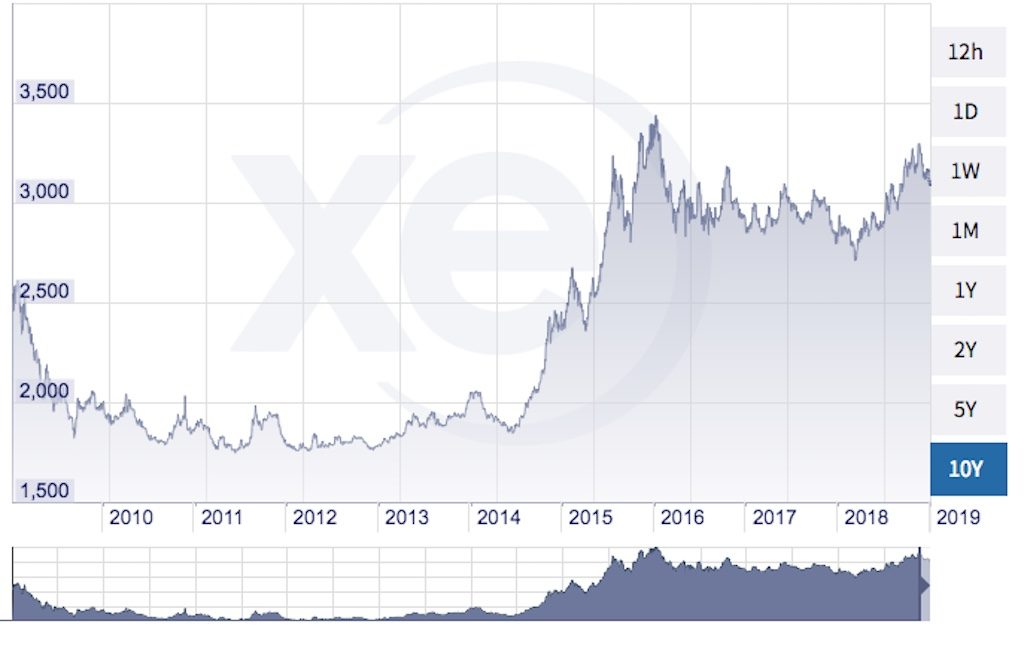
USD to COP 10-year exchange rate history, source XE.com
4. Exchange Rate is Volatile
When living in Colombia pretty much all of your costs will be in the local currency – Colombian pesos (COP).
The exchange rate over the past three years has been very beneficial if you have U.S. dollars (USD) or another Western currency. But the exchange rate has fluctuated dramatically over the years. So, it hasn’t always been like now.
Over the past 10 years the exchange rate has ranged from 1,745 to 3,438 pesos to the USD. So, your cost of living in Colombia in terms of USD will fluctuate. Over the past three years the exchange rate has ranged from 2,711 to 3,438 pesos to the USD. This is a much higher exchange rate range than the prior seven years.
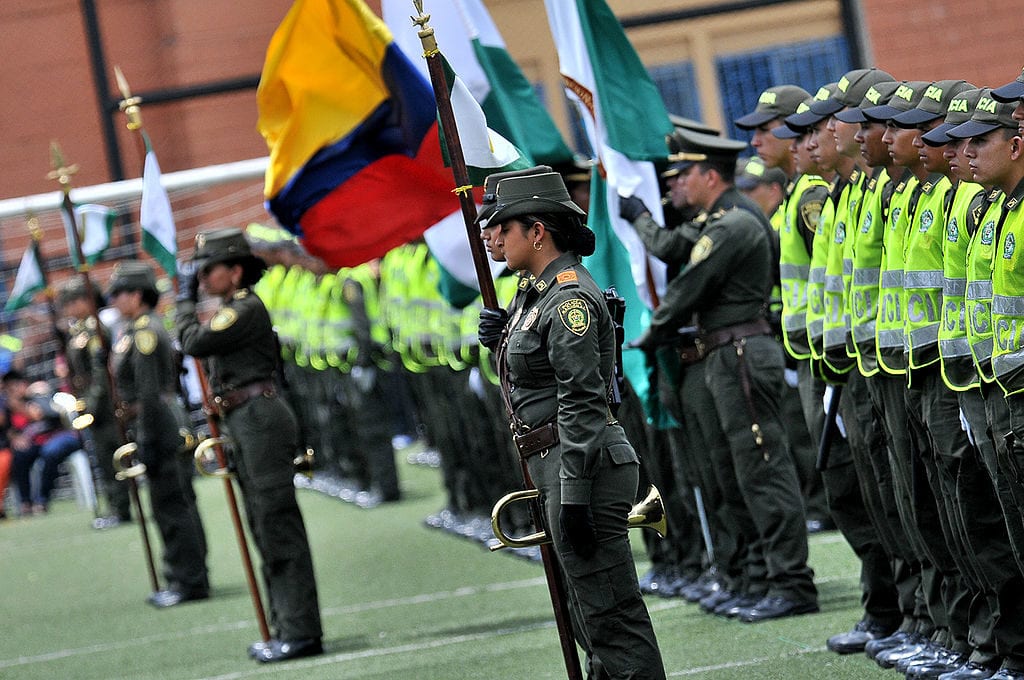
1,000 new police in Medellín in 2014, photo by National Police of Colombia
5. Colombia Can Be Dangerous
There are parts of Colombia and parts of each city in Colombia where you really shouldn’t go. And you should learn these.
Parts of Colombia are still ravaged by a war between guerillas (the ELN et al), paramilitaries and government forces. And while Colombia signed a peace agreement with the Revolutionary Armed Forces of Colombia (FARC), some dissident groups refused to demobilize.
The U.S. Department of State has a Colombia Travel Advisory that is currently at Level 2 – exercise increased caution. In this travel advisory, it is advised to reconsider travel to several departments in Colombia including Arauca, Cauca, Chocó, Nariño and Norte de Santander Departments, with the exceptions of the cities of Popayan (capital of Cauca) and Nuqui by air.
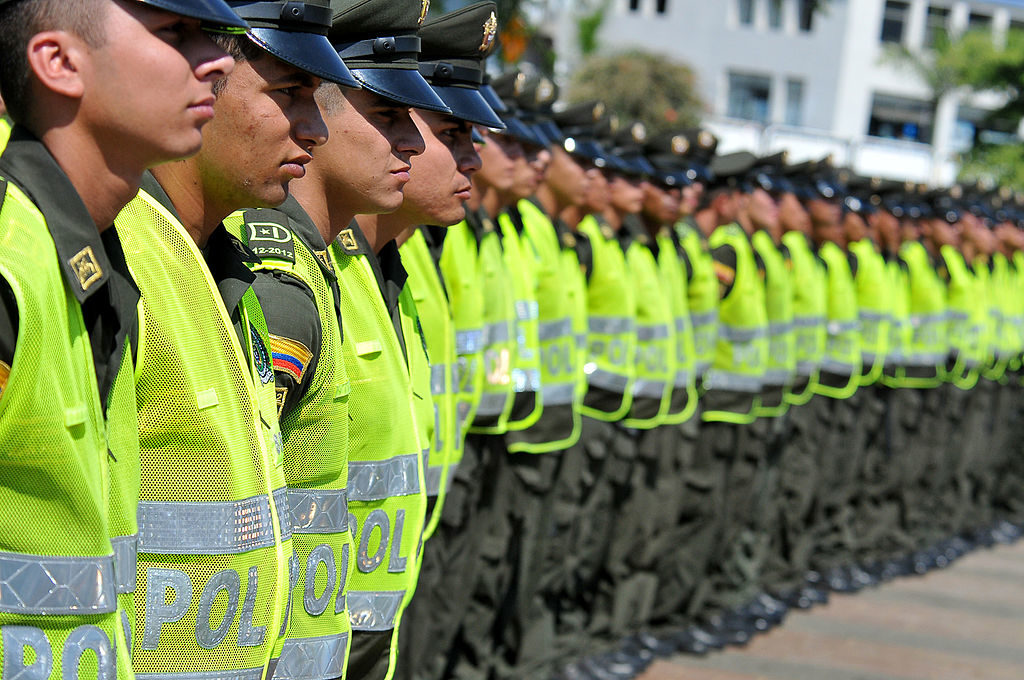
Police in Cali, Colombia, photo courtesy of National Police of Colombia
Also, Canada has travel advice and advisories for Colombia that says to “exercise a high degree of caution”. It also recommends avoiding all travel within 20 km of the border with Venezuela, within 20 km of the border with Panama and the ports of Buenaventura and Tumaco.
While the reported homicide rates in some cities in Colombia can be lower than in some cities in the U.S., these reported rates should be taken with a grain of salt; there are also some disappearances that are not counted as homicides.
While safety in Colombia has improved significantly in recent years street crime is still common. So, there is a need to take certain basic precautions and being vigilant about your personal safety. We have a separate article about safety in Medellín with safety tips that also apply to other cities in Colombia.
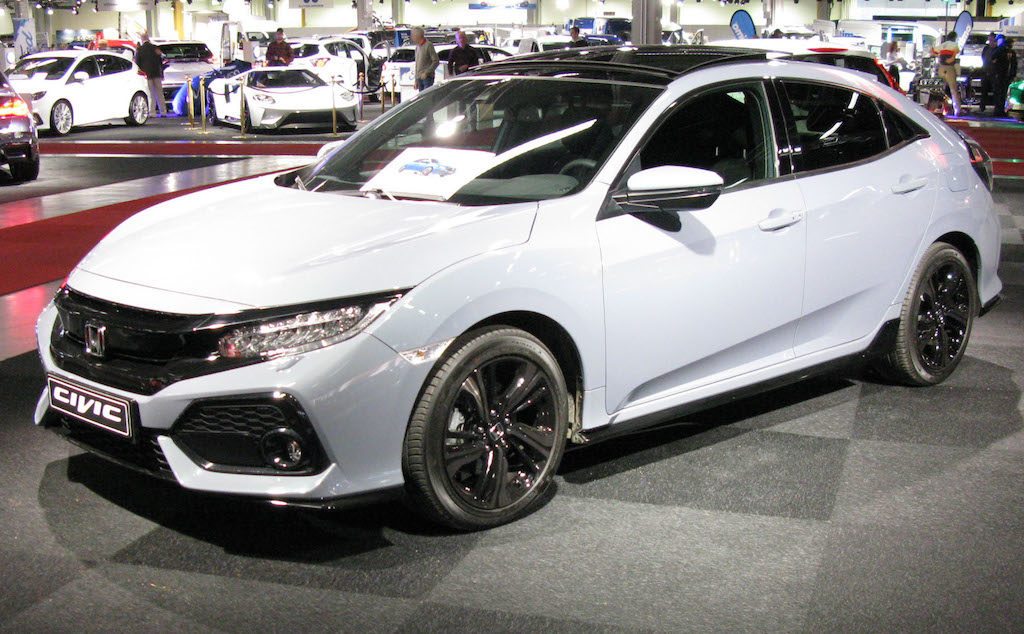
Honda Civic costs about $39,900 in Colombia
6. Cars are Expensive in Colombia
Cars can be quite expensive due to import duties in Colombia of up to 35 percent. Reportedly over 60 percent of the vehicles sold in Colombia are imported. So, many models of cars sold in cities in Colombia can be more expensive than in the U.S.
Colombia has a free trade agreement with the U.S. that went into effect in 2012. The agreement is phasing out the import duty for vehicles over a 10-year period but there are still import duties.
In addition, Colombia has free trade agreements with several other countries. These other agreements are also phasing out import duties for automobiles. Over time this will help reduce the costs for imported vehicles sold in Colombia.
When living in Colombia, you should expect to pay more for a car than in the U.S. Also, there are also ongoing costs with owning a car including insurance, maintenance, taxes and gasoline.
But it is possible to live in several cities in Colombia without a car. For example, Medellín has a comprehensive metro system and many inexpensive bus routes. So, it’s possible to overcome this downside by not owning a car.
Cars are not the only expensive things in Colombia. We previously looked at 9 expensive things in Medellín for expats. But there are more inexpensive things found in Colombia and we looked at 14 cheap things in Medellín for expats.
7. Customer Service is Lacking – Patience is Needed in Colombia
You will need patience and tolerance living in Colombia. If someone says they will be there in 30 minutes it may be in two hours, tomorrow may mean sometime later in the week and so on.
Also, don’t expect someone to be on time for a date. It’s a pleasant surprise when they are. Colombians don’t come from a service-oriented culture. So, customer service can at times be very slow. And cashiers at groceries stores can be frustratingly slow in Colombia.
North Americans and Western Europeans used to their more well-oiled realities will run up against their share of disorganization, poor service, long lines and bureaucracy in Colombia, which can range from mildly frustrating to infuriating.
However, this is no different than many other countries in Latin America. I have experienced similar issues in Argentina, Brazil, Ecuador, Mexico, Peru and several other countries in Latin America.
8. Jobs in Colombia Don’t Pay Very Much
Don’t come to Colombia expecting to find a job that pays very well. It is very difficult for a foreigner to make a living in Colombia unless you’re an expat that works for a multi-national company. Or it’s possible to have a location independent job based in the U.S. or other more wealthy country and work remotely.
Keep in mind the minimum monthly wage in Colombia is only 828,116 pesos ($251 USD) per month in 2019.
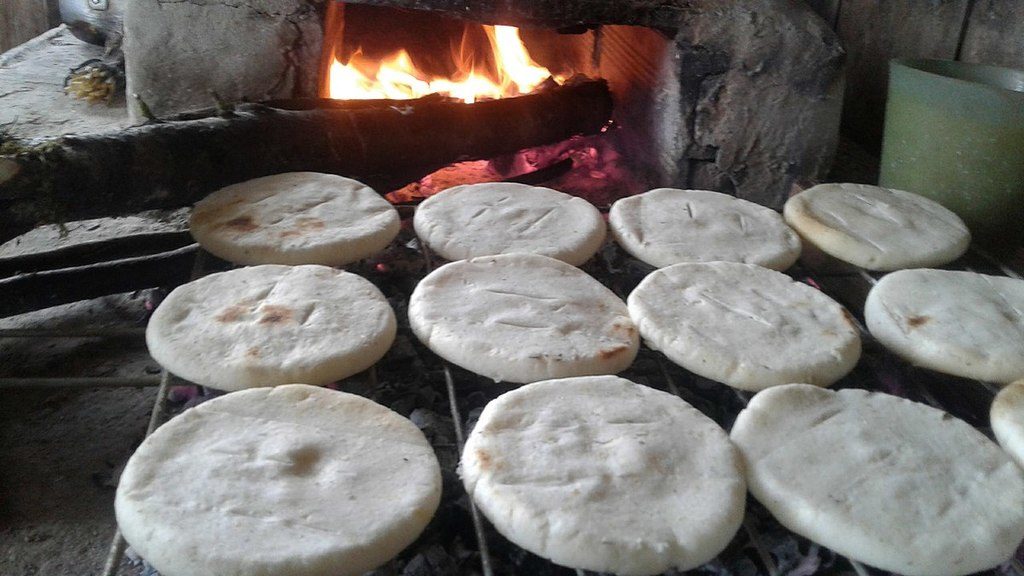
Arepas cooking on a wood-fired stove, photo by AmethystCosmos
9. Colombian Food Isn’t the Best
While some foreigners claim to love Colombian food, I don’t really like some of the typical Colombian foods. For example, Arepas, those starch-laden answer to the tortilla common in Colombia, to me don’t have any flavor. So, you need to add cheese to them or something else to make them edible.
But there are several typical Colombia foods I like. And I also like many of the typical street foods in Colombia. Also, I like the huge variety of tropical fruits found in Colombia.
But some food in Colombia to me is too bland and leaves much to be desired. While there are several foods in Colombia I love, they are the exception, not the rule. I personally prefer the food of Peru and Mexico in Latin America.
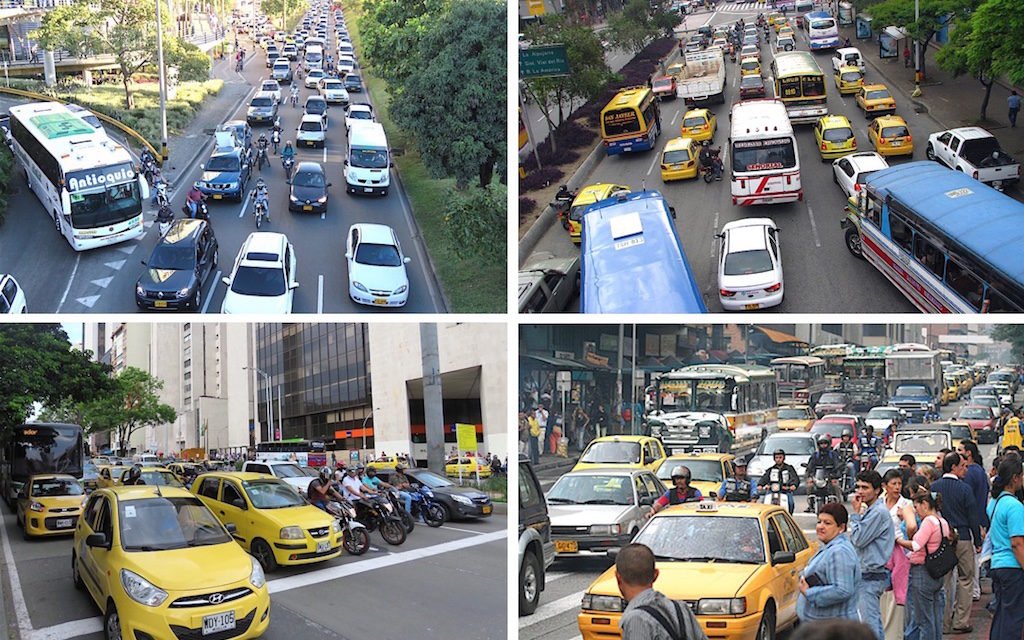
Traffic is a downside of Medellín but isn’t a downside in all of Colombia
Other Downsides That Don’t Apply to All Cities in Colombia
There are several other downsides that really apply to particular cities in Colombia. For example, Traffic and pollution are problems in the two biggest cities of Colombia: Bogotá and Medellín. But traffic and pollution aren’t that big of a problem in other cities in Colombia.
So, traffic and pollution aren’t really downsides of Colombia, as some posts and videos on the Internet claim. Traffic and pollution are downsides of cities like Bogotá and Medellín and not the overall country of Colombia.
The Bottom Line: Colombia Downsides – Downsides to Living in Colombia
No country is perfect and there are downsides to living in any country. For me the positives and advantages of an expat living in Colombia greatly outweigh the downsides and negatives. I have traveled to over 40 countries and decided to live in Medellín in Colombia.
But before deciding to live in a country like Colombia it’s important to understand the downsides.
Some publications tend to praise Colombia as a top foreign retirement location but they don’t really discuss all the downsides. So, hopefully the above article will help communicate some of the downsides of living in Colombia from an expat’s perspective.
What other downsides have expats experienced living in Colombia?
Sign up for the Free Medellin Guru Newsletter – You can see all of the previous Medellin Guru weekly email newsletters and sign up here.

